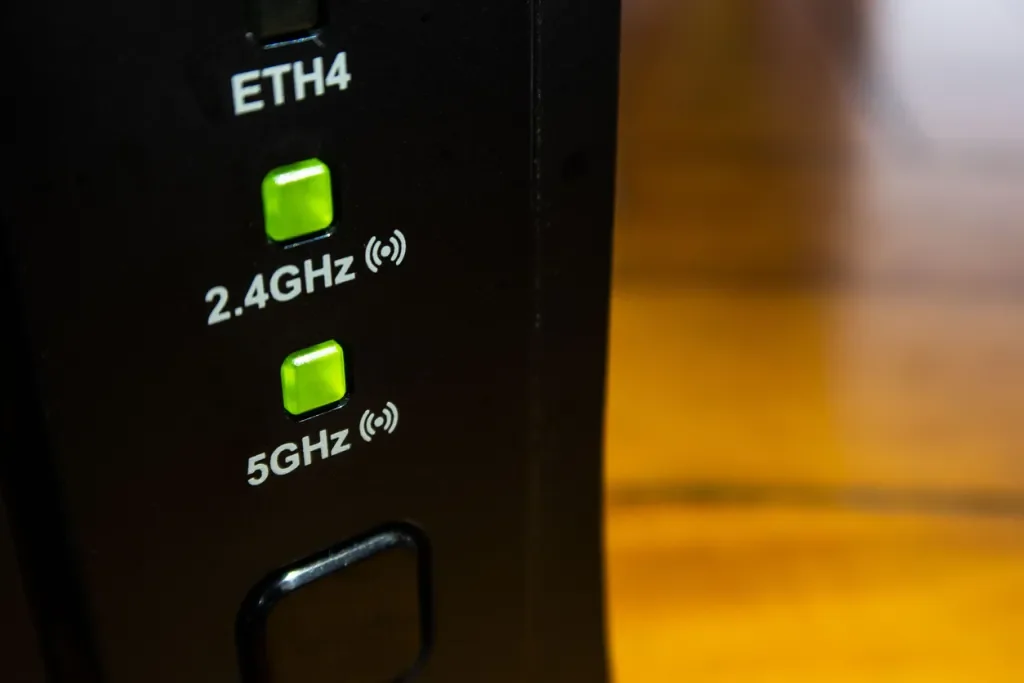Nomadic remote workers seem to be raving about the Pepwave router. It’s keeping their Zoom calls connected and allowing them to do things online much faster.
With all this talk, you might wonder how this device differs from your current way of using the Internet on the road. Is it really that much better than your phone’s hotspot?
Today we’ll share everything you need to know about Pepwave routers. It might just be the game-changer you’ve been looking for.
Let’s go!

What Does a Pepwave Router Do?
If you’re an RVer working remotely on the road, you might want to consider getting a Pepwave router. It can increase your ability to maintain a solid internet connection while camping in secluded areas.
Not only that, but you’ll get greater upload and download speeds than you do from standard phone or cellular hotspots. Even the best Jetpacks on the market have difficulty competing with Pepwave routers.
While they aren’t cheap, the expense may be worth it if you’re constantly dropping off Zoom meetings or losing internet connection. And if you regularly send sensitive documents over the web, Pepwave routers offer users excellent security.
The Benefits of a Pepwave Router
One of the most significant benefits of a Pepwave router is the connection speed compared to standard hotspots. That’s because the antennas and transmitters are much stronger than they are in phones and devices such as Jetpacks. These two key components work together to provide you with a much faster connection than you might get with your iPhone or Android alone.
Another aspect of these routers that brings you better speed is something called carrier aggregation. Basically, that means the Pepwave can link to multiple frequency bands on any given cell tower instead of just one.
When phones connect to a nearby signal, they communicate with a single band. With the Pepwave router reaching out to more than one band, the result is much faster internet speeds.
Another benefit of Pepwave routers is the ability to use more than one SIM card. Many full-time nomadic RVers will tell you it’s a good idea to utilize multiple carriers for data.
If you happen to be in an area where AT&T doesn’t work, there’s a good chance Verizon or T-Mobile will get a connection. So using a router that can accommodate several SIM cards allows for better service continuity. For example, if one carrier slows down or drops out altogether, the Pepwave seamlessly chooses another provider with a better signal.
Multiple Happy Users
One last benefit we’d like to mention will surely appeal to those RVers traveling with several people on board. The Pepwave router allows multiple users to be connected at once and will balance the bandwidth used between each person.
This feature comes in handy for remote workers. You can be on a Zoom meeting while the rest of your family is gaming, streaming shows, or searching the Internet. Known as load balancing, the Pepwave evaluates the needs of each user so no one drops their connection.
You might want a booster, too: RV Cellular Booster by WeBoost Review.
The Disadvantages of a Pepwave Router
Very few things in life are perfect, and that goes for the Pepwave router, too. While it seems to be a highly-functioning device, it still has flaws.
You’ve likely had experience with internet throttling at one time or another. That means your provider intentionally slows down your connection.
It often happens during peak usage hours in congested areas, or you may have a data cap you’ve exceeded. Whatever the reason, it’s super annoying. Unfortunately, you’ll still have this issue with the Pepwave router.
Pepwave offers an impressive line of products. However, with most of them, it’s best to be somewhat tech-savvy. They aren’t simply plug-and-play type devices.
So if technological components overwhelm you, having someone help you choose the right Pepwave product might be a good idea. And also have them set it up for you too!
The price of these routers can be another disadvantage for some people. While the basic model runs around $200, the more extensive routers cost well over $1,000.
But a Pepwave that’ll work for most users ranges between about $300 to $500. They certainly aren’t cheap, but you may find the benefits are worth the high price tag.
What Is the Difference Between Pepwave and Peplink?
There’s actually no difference between the two names. Used interchangeably, Peplink and Pepwave describe the same product line.
Though to be specific, Peplink is the official company name. It can be confusing, especially when looking at the various router models.
You’ll notice some have Pepwave while others use Peplink in the product name. But they all come from the same company.

Do You Need a Subscription for a Pepwave Router?
To maximize the benefits of a Pepwave, you might want to shell out a little more cash for certain features. The main one is a subscription to PrimeCare or EssentialCare.
Fortunately, if you choose the Pepwave Max Transit router, it comes with one year of PrimeCare. Among other benefits, this service provides a warranty and subscription for SpeedFusion for the first year of use. All other Pepline products come with EssentialCare coverage for the same initial time frame.
Of course, once the first year of service ends, you can pay an annual fee to keep it going. So you’ll be looking at a cost of $69 to $199 per year, depending on your chosen plan.
The SpeedFusion service seems well worth the additional expense. It’ll keep you up and running with fast speed and reliable connections. Plans start around $20 for six months and go up from there. The most expensive option costs under $600 but covers you for three years and allows for extensive data usage.
Does a Pepwave Router Require an Antenna on the Roof?
While a roof-mounted antenna isn’t necessary to use a Pepwave router, you’ll experience better speeds and connections if you have one installed. Of course, it’ll add a few hundred dollars to the overall setup cost, but it’s a one-time fee.
Pepwave offers a line of antennas, but other brands will work too. Just be sure to get one that’s directional. This type of antenna will beam the signal toward a specific area which helps provide a better connection. It’ll also reduce interference from other surrounding wireless devices.
Try some easy tweaks with our: 5 Easy RV Internet Hacks.
Is a Pepwave Router Worth It?
For nomads working from the road requiring a solid data signal and speed, a Pepwave router could be worth the hefty price tag. Or, if you travel with multiple people who want to stream, search the web, and make video calls on different devices, it can be a real game changer.
Technology moves incredibly fast, and the cost of these routers may come down eventually. You can either wait it out or invest in a unit now to make your online life easier.
We’ll Help You Find the Best Free Camping in the USA
You should give it a try!
As a matter of fact, these free campsites are yours to enjoy. Every time you pay federal taxes, you’re contributing to these lands.
Become a FREE CAMPING INSIDER and join the 100,000 campers who love to score the best site!
We’ll send you the 50 Best Free Campsites in the USA (one per state). Access the list by submitting your email below: